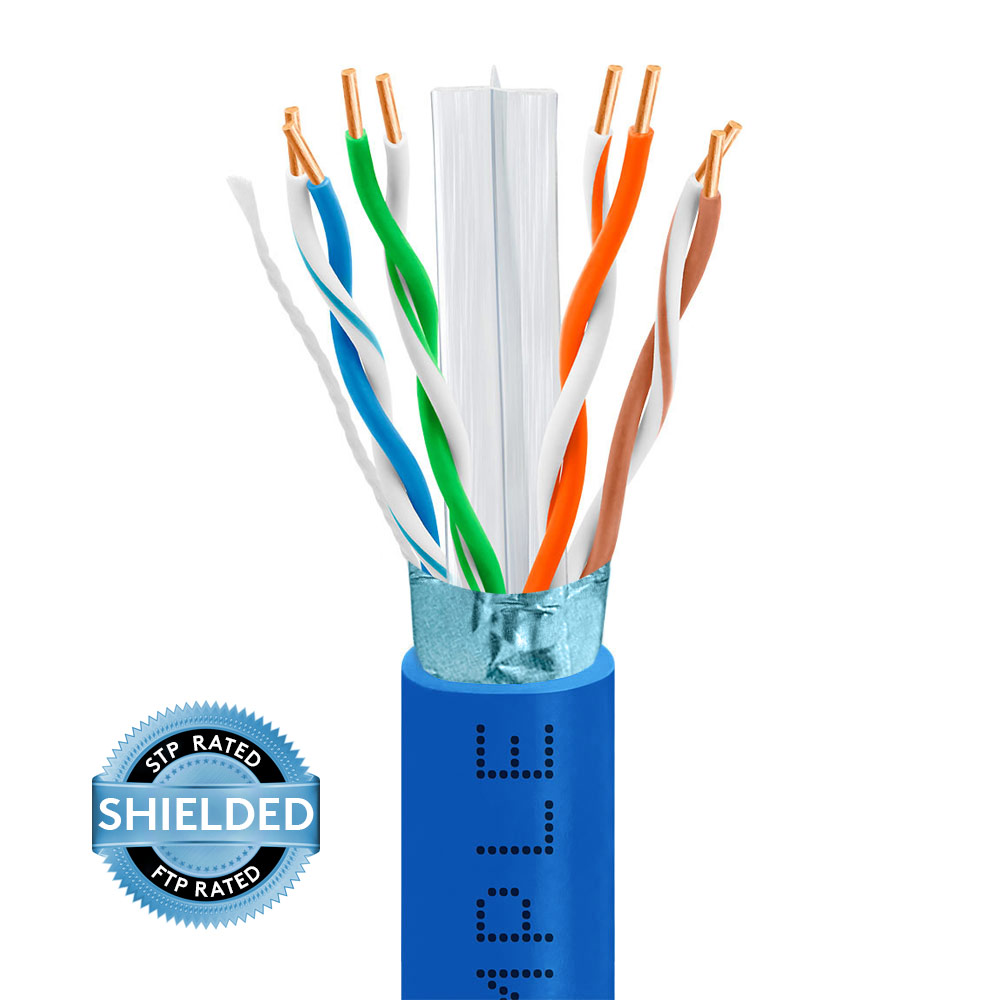Understanding Cable Jacket Ratings: CL, CM, CMR and CMP
So you need some cable to run for a new Ethernet or home theater in your home, and you know exactly what type and length of cable you need – Cat6 cable, or Cat5e cable – whatever it might be. You get as far as the first page of a site, or the aisles in a store, and you’re confronted with another decision you hadn’t expected: CMP? CMR? (or just CM?) What on earth is that, other than a conspiracy to make you so confused you don’t buy anything at all? Actually, they’re very important letters and numbers, and you need to be sure you’re choosing the right one. They’re all ratings specified by the National Electric Code (NEC), they’re designed to ensure safety, and you could be in trouble if you use cable that isn’t properly rated for its intended use.
Actually, they’re very important letters and numbers, and you need to be sure you’re choosing the right one. They’re all ratings specified by the National Electric Code (NEC), they’re designed to ensure safety, and you could be in trouble if you use cable that isn’t properly rated for its intended use.
Who Determines The NEC, And Why Do I Have To Follow It?
The National Electric Code is published by the National Fire Protection Association. It contains minimum standards for almost everything involved in electrical wiring, from the cables themselves to signs, machinery and alarm systems.The NEC isn’t a federal law; in fact, it’s about one thousand pages of guidelines. However, nearly all states, cities and towns have adopted it as an integral part of their building codes, with a few either amending it or substituting their own local codes. Electricians have to learn the complete code and prove that they understand it before they can be licensed.
The primary purpose of the NEC is to prevent fires. Electricity and electrical cables face varied types of environmental stresses within the different areas of a home or commercial building, and even outdoors. The code is intended to minimize the risk of shock, fire and the production of toxic fumes in each of those areas through the use of different types of wiring, conduits and equipment.
If it’s not a law, why should you obey it? There are two reasons. First, building inspectors will (or least, they should) check to make sure that all wiring meets local or state codes before signing off on any work. If your wiring doesn’t meet code, you won’t qualify for an occupancy permit.
What about homeowners who do their own wiring and never call local officials for permission or an inspection? That’s the second reason to follow the NEC guidelines; courts have held property owners liable for negligence in civil suits if they didn’t follow code, and fires resulted in loss of property or life. In other words, you could be facing a much larger expense than the few extra bucks you might have to spend for the right cable.
Back to our original question: what are all of those numbers and letters?
Cable Jacket Ratings: The Background
CMP, CMR and the like are the NEC’s ratings for the outer casing or “jacket” that surrounds a cable’s internal wiring and insulation. The purpose of the jacket is to protect the wiring from physical damage, moisture, ozone and ultraviolet rays.
 In the US, almost all cable jackets used for low-voltage applications like Ethernet, communications and audio/visual installations are made from flexible and relatively-inexpensive polyvinyl chloride (PVC). Price and flexibility are the upside of PVC, but there’s a potential downside. The material can release thick smoke and dangerous gases like hydrogen chloride in a fire.
In the US, almost all cable jackets used for low-voltage applications like Ethernet, communications and audio/visual installations are made from flexible and relatively-inexpensive polyvinyl chloride (PVC). Price and flexibility are the upside of PVC, but there’s a potential downside. The material can release thick smoke and dangerous gases like hydrogen chloride in a fire. That can be a particularly serious problem if toxic smoke and gases are released in areas where they could rapidly spread to other parts of a building. However, some PVC jackets are more resistant to fire than others, and release less dangerous gas and fumes. NEC ratings identify the properties of a cable’s jacket, to ensure that contractors and homeowners use the proper type of jacket for the area where a cable will be installed.
That can be a particularly serious problem if toxic smoke and gases are released in areas where they could rapidly spread to other parts of a building. However, some PVC jackets are more resistant to fire than others, and release less dangerous gas and fumes. NEC ratings identify the properties of a cable’s jacket, to ensure that contractors and homeowners use the proper type of jacket for the area where a cable will be installed.We have to deal with one other set of definitions before getting to the actual ratings. These involve with the way a commercial building is constructed, and they’re important because they’re important to code ratings. Don’t worry, we’ll keep things basic.
A riser could also be called a vertical shaft; it’s the space between floors in a building where ducts, conduits, cables and pipes are installed to run power, low-voltage wiring and other utilities. A plenum is an area where the building’s air ducts are connected for heating, ventilation and air conditioning; raised floors and drop ceilings are two examples. It’s easy to see why restricting production of flames, smoke and toxic gas is important in those areas. Flames could spread quickly between floors in a riser, and dangerous gases could be distributed throughout an entire building if released in a plenum.
OK – we’re finally ready to explain those cable jacket ratings.
Cable Jacket Ratings
Here the most common ratings you’ll encounter. If a cable doesn’t have one of these ratings, it cannot be installed in walls or ceilings.- CL/CM/CMG: These cable jackets are suitable for use in all ordinary situations, with CL cables used for audio/visual applications and CM/CMG used for communications applications like Ethernet. They’ve passed what’s called a “vertical tray flame test,” meaning they don’t ordinarily spread flames more than eight feet. You can install these rated-cables in the wall or ceiling, and don’t have to worry about things like risers and plenums in home use.
- CMR: This is the next step up. A CMR rating means the cable can be used in the risers of commercial buildings because they limit the spread of flames better than cables in the CL/CM family. They can be installed anywhere except plenums. CL2R and CL3R are the riser versions of CL2 and CL3, meant to carry higher voltages.
- CMP: The “P” obviously stands for plenum, so this communications cable can be used in plenums in addition to anywhere that CM and CMR cable can be run. The jackets are made from material that retards the spread of flames, and does not give off much smoke or toxic gas when burned. CMP jackets may be made from other materials as well as PVC.
You can find all of these cables in the enormous Cmple inventory available online, all with outstanding manufacturing quality and our always very low prices.








